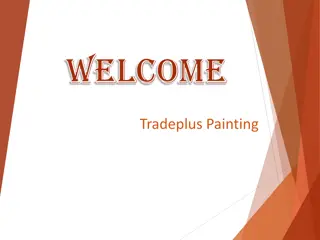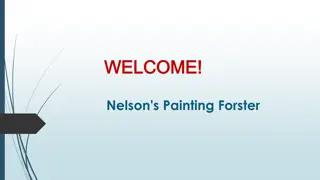Exploring the Chinese Three Perfections: Poetry, Calligraphy, and Painting
Scholars from the Tang period through the Ming era in China highly esteemed the three perfections – poetry, calligraphy, and painting. Calligraphy, considered the highest art form, reveals a person's nature. Poetry, akin to painting with sound, was crucial during the Tang dynasty. Painting, often called silent poetry, was inspired by landscapes. The interplay of these art forms enriched the Chinese cultural landscape, as explained by Stephen D. Allee, a renowned curator. Immerse yourself in the beauty and depth of the Chinese Three Perfections through art and poetry creation.
Download Presentation

Please find below an Image/Link to download the presentation.
The content on the website is provided AS IS for your information and personal use only. It may not be sold, licensed, or shared on other websites without obtaining consent from the author. Download presentation by click this link. If you encounter any issues during the download, it is possible that the publisher has removed the file from their server.
E N D
Presentation Transcript
Chinese Three Perfections Assignment
Remember, from the Tang period through the Ming, scholars valued the three perfections: poetry, calligraphy, and painting.
Calligraphy is a word derived from the Greek that means beautiful handwriting. It is regarded in China as the highest art form. The art of calligraphy is a means of self- expression, revealing a person s nature or character.
Poetry was an important form of art as well. It was regarded as painting with sound. Great poets were famous throughout the empire, but all educated people were expected to write poetry. During the Tang dynasty, poetry became so important that writing poetry was part of the civil service exam.
Painting was regarded as silent poetry. It was often inspired by poetry and combined with calligraphy. Many paintings were landscapes that featured mountains, homes, birds, trees, and water.
Stephen D. Allee, the Smithsonians associate curator for Chinese painting and calligraphy explains, If, for example, four artists went on a trip together, one might paint a landscape and the others respond to it with poems. There is an interrelationship between the image and the poem. The inscription tells you the history of the trip. The poems would make the landscape come alive.
Example of a Three Perfections Piece [Untitled Poem Inscribed on a Painting by Himself] Shen CHou White clouds like a scarf enfold the mountain s waist; stone steps hang in space-a long, narrow path. Alone, leaning on my cane, I gaze intently at the scene, and feel like answering the murmuring brook with the music of my flute.
Today you will create your own Three Perfections work of art.
Your three perfections will tell the story of an important concept from China in the Middle Ages.
You may choose one of the following topics: Reunification of China under the Tang Dynasty Reasons of cultural diffusion of Buddhism ONE important example of agricultural, commercial, OR technological development during the Song dynasty Rise of the scholar-official class Spread of Chinese technology to other parts of Asia, the Islamic world, and Europe [choose one form of technology]: papermaking, woodblock printing, compass, and gunpowder Mongol conquest of China One Ming contribution that affected China: Forbidden City, Reconstruction of the Great Wall, isolationism, or sea voyages
1. After you have chosen your topic, you must write a poem explaining your topic. Think about how your topic made an impact on China, why is it important, the effect on the modern world, etc. Your poem must be written using calligraphy. I have examples for you to use. Your poem must be at least 5 lines. 2. You will need to paint a picture that relates to your poem. Your poem tells the story of your painting. 3. Your assignment is ONE piece of art. The poem and painting must be done on the same piece of paper on the same side
Painting 30 pts Poem is 5 lines or more 5 pts Poem demonstrates how the topic chosen relates/affected China 30 pts Poem is in cursive 35 pts
Works Cited: https://www.ngv.vic.gov.au/essay/three-perfections-poetry-calligraphy- and-painting-in-chinese-art/ https://www.ngv.vic.gov.au/exhibition/three-perfections/ https://poeticpossibilities.wordpress.com/2012/02/01/the-three- perfections-chinese-painting-poetry-and-calligraphy/ ( background picture) https://www.clevelandart.org/sites/default/files/documents/lesson- plans/cma_lesson_ao_3perfections.pdf http://www.ducksters.com/history/china/chinese_art.php https://www.smithsonianmag.com/smithsonian-institution/when- painting-also-poetry-180959163/ http://poetrychina.net/wp/calligraphy-painting/poems_with_paintings/4 Sites for Calligraphy Examples: http://www.doodlecraftblog.com/2014/11/how-to-fake-script- calligraphy.html?utm_source=feedburner&m=1 http://www.freeprintableonline.com/printables/lesson-plans/classroom- lessons/cursive-alphabet-worksheet























